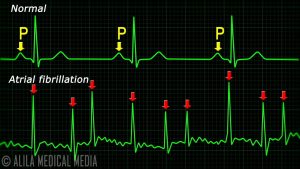Intermittent fasting is changing the way people eat. But there are so many different ways to fast these days, is one method better than all the rest? Personal trainer and health coach, Max Lowery says, cutting your eating down to just 2 meals a day is the best way to tackle fasting head-on. He also believes that the popular 16:8 method isn’t as perfect as it seems. With just one slight adjustment, he says you can make it far more effective. You can learn more about his lifestyle on Instagram. Tech Insider tells you all you need to know about tech: gadgets, how-to’s, gaming, science, digital culture, and more. Subscribe to our channel and visit us at: http://www.businessinsider.com/sai TI on Facebook: https://www.facebook.com/techinsider TI on Instagram: https://www.instagram.com/tech_insider/ TI on Twitter: https://twitter.com/techinsider ————————————————– Following is the transcript of the video: Max Lowery: So 16:8 is basically, you break your day up into a period of a 16-hour fast with an 8-hour eating window. And I think it’s just, you know, for me, it’s just the more natural way of eating. Obviously, most people that start doing the two meal day is because of weight loss, and yes, they are losing weight but actually, we’re constantly hearing how people have so much more energy throughout the day. They are not having, you know, this energy crashes because they aren’t so dependent on food for energy, they are using body fat. They realize that they don’t have to constantly eat to get themselves through the day. So the reason I started the two meal day — it’s not the 16:8, is because one of the main issues that people come into with the 16:8 is that they get obsessed with the time periods. And they start counting down the hours until they can eat and they end up eating because the clock tells them to rather than their body tells them to. It’s essentially the same thing, in terms of, what’s going on, but just changing the focus to listening to your body is when it becomes a way of life because you’re understanding yourself better. If someone says, “Okay, how do I start tomorrow?” First of all, choose whether you’re going to find it easier to skip dinner or you’re going to find it’s easier to skip breakfast. So say you’re skipping breakfast, I would say, “Okay, what time do you normally have your breakfast?” Average person says 8 a.m. I’ll say, “Okay, rather than 8 a.m., go in to work or whatever you are doing and wait until 10 a.m. and see how you feel.” And then basically, over the course of two weeks, push until it’s a 16-hour gap. And the whole time you are listening to your body, you’re kind of, hopefully learning to understand that just because your stomach is empty, does not mean that you are hungry. Then the main thing is that you fundamentally need to be eating whole foods cooked from scratch. A lot of other intermittent fasting methods have been like, “Oh no, you can eat what you want but just in a small time period” or “Eat what you want for 5 days.” That doesn’t encourage changes in behavior long-term, which is obviously, fundamentally what the issue is for some people. So all I’m trying to do is just educate people and give them the tools to listen to their bodies better and that’s really what it boils down to.

Intermittent Fasting & Fasting Video – 6
- Post author:
- Post published:May 13, 2021
- Post category:Uncategorized
- Post comments:0 Comments
You Might Also Like

Keto Diet, Keto Foods, Keto Recipes Video – 27

Instructional Fitness – Flat Bench Flies

TSA 9 Week Program Bench Progression

Handball Video – 3

Sports Psychiatry Video – 1

Atrial Fibrillation Anatomy, ECG and Stroke, Animation.

CPR Cardiopulmonary Resuscitation Video – 6

fitball back extension

Psychiatry Video – 1

Flat Bench Press Dumbbell-6

BCAA Kya Hai? BCAA Ke Fayde Aur Nuksan | @Fitness Fighters

What is Heart Attack explained in Hindi by Dr. Vinod Sharma.

How to Use Egg Protein to Build Muscle | Bodybuilding Diet

Pec Deck Machine: Chest Workout (Burns 94 Calories)

Lying Triceps Extension to Close Grip Bench Press Exercise

Starting Insulin Early For Type 2 Diabetes

How to Get Toned Abs (IN ANY LIGHTING!)

IS CREATINE POWDER DANGEROUS ? ( HINDI ) – ANIMATED SCIENCE FACTS
Semen Analysis

euflexxa knee injection animation

Meningitis

The Muscular System Explained In 6 Minutes

Injection Techniques

First Aid for a Heart Attack

IQQA®-Liver for Virtual Liver Resection

Chest Exercises: Bench Press

Work It! Back Extensions on Ball

Creatine for Beginners – Things You Need to Know

Fat Loss Weight Loss Video – 1

ON amino tablets unboxing from spoter.com

How to hit your rear delt for faster muscle growth

Best Foods To Eat Before A Workout For More Energy

What is Osteoporosis and how is it prevented? – Dr. Hanume Gowda

What Visceral Fat Does To The Body (The Doctors)

The Standing Calf Raise

Glucagon

Bodybuilding Video – 4

What Can Help Prevent a Stroke – Check Your Heart Rhythm

What Is Insulin And What Does Insulin Do?

Asanas Meaning And More Asanas Video – 4

What Is Rheumatoid Arthritis?

